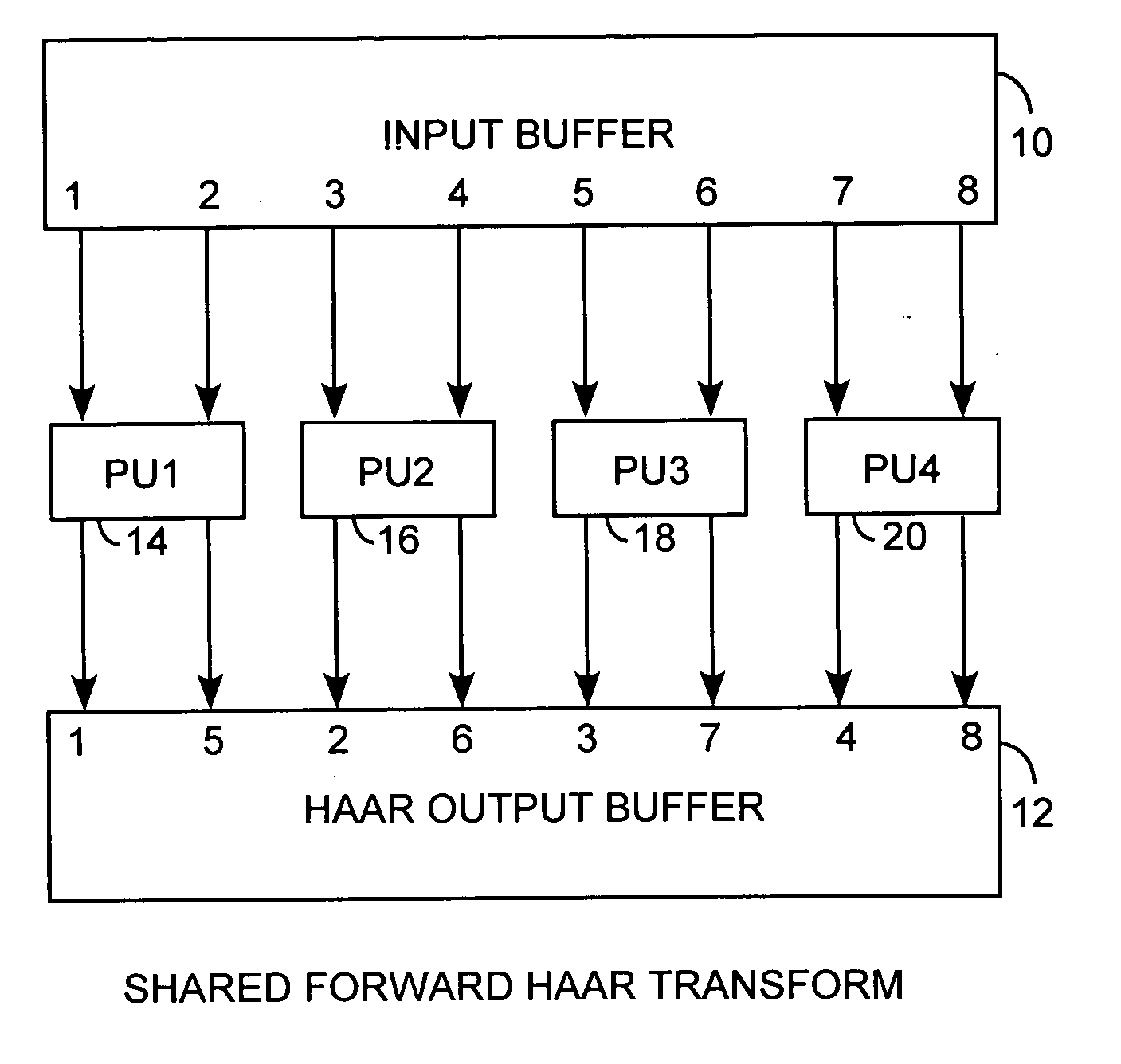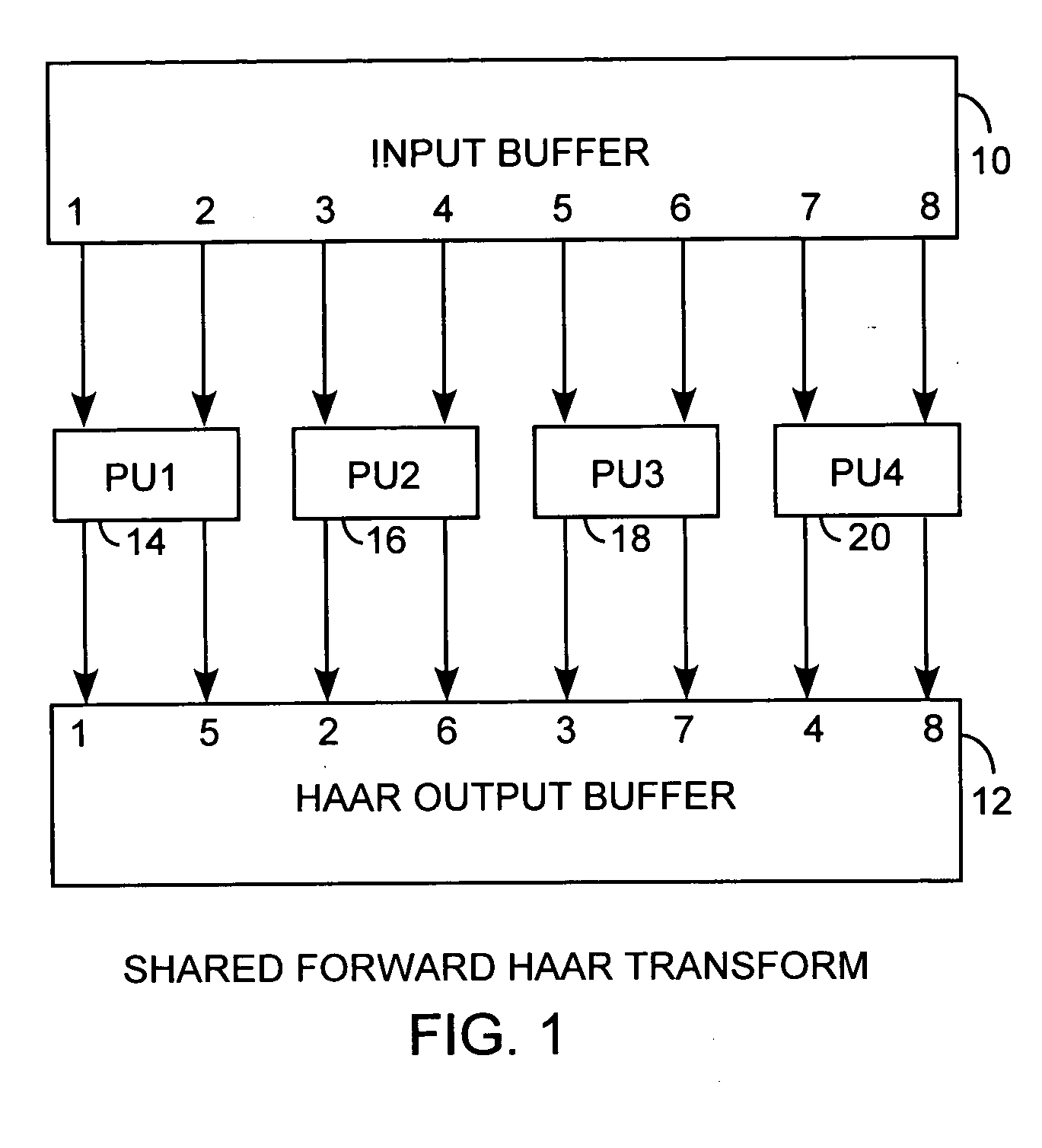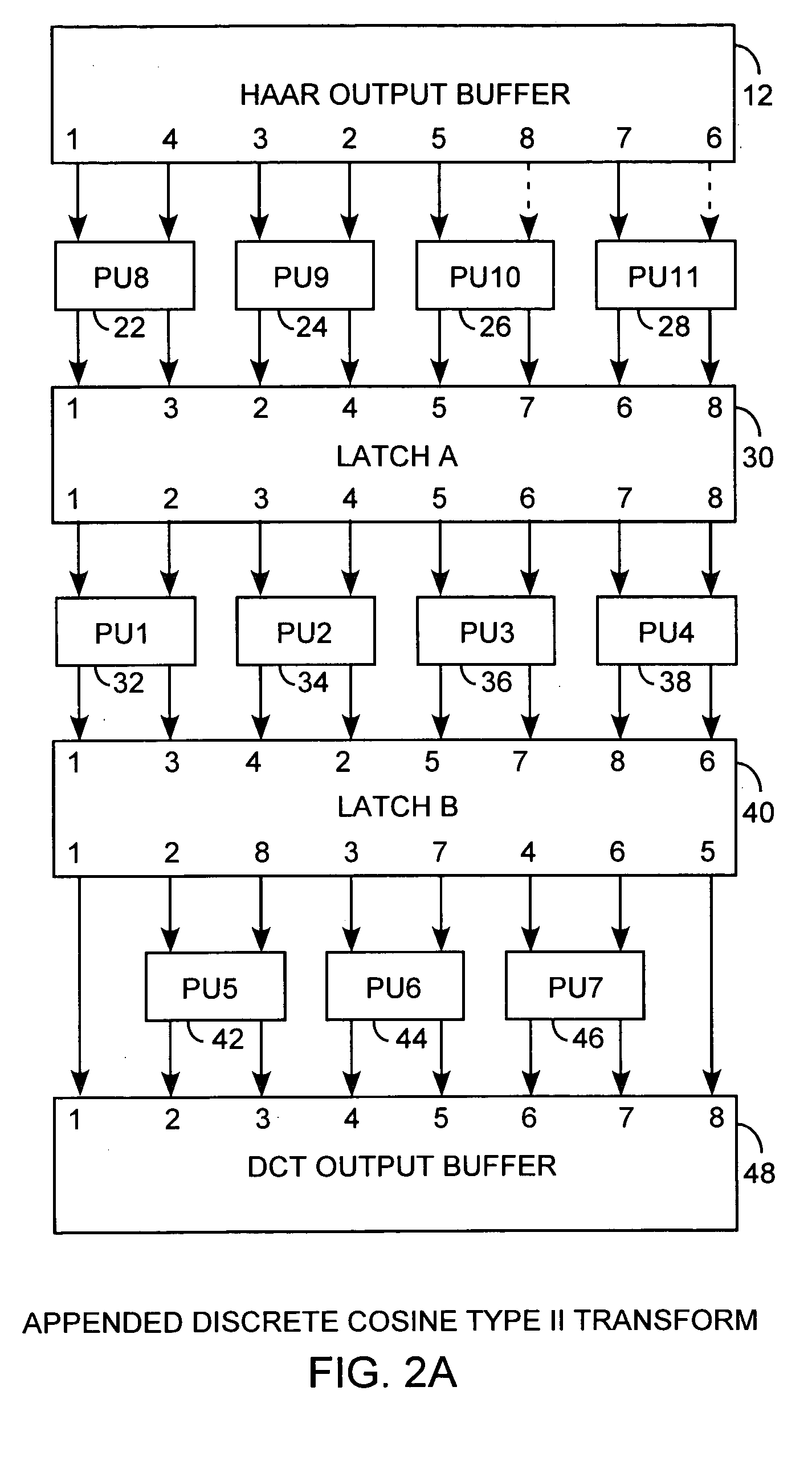Haar wavelet transform embedded lossless type IV discrete cosine transform
a cosine transform and lossless type technology, applied in the field of discrete cosine transforms, can solve the problems of no decidation-in-time dct separate flow process, mirror inverse dct transform does not provide lossless transformation, and the cosine transform (dct) cannot enable one to directly
- Summary
- Abstract
- Description
- Claims
- Application Information
AI Technical Summary
Benefits of technology
Problems solved by technology
Method used
Image
Examples
Embodiment Construction
[0030] An embodiment of the invention is described with reference to the figures using reference designations as shown in the figures. Referring to FIG. 1, an input set of eight integer image data samples from input buffer 10 is passed on to the next processing stage in consecutive word pairs. Input data words one and two are sent to processing unit PU114, input data words three and four to processing unit PU216, input data five and six to processing unit PU318 and input data words seven and eight to processing unit PU420. The data input are preferably bit-parallel serial words. The processing units, PU114, PU216, PU318, and PU420 are identical lossless 2×2 rotators with a 45 degrees rotating angle, that is, π / 4 radians. The rotated outputs of PU114 are input words one and five to the Haar output buffer 12. The rotated outputs of PU216 are input words two and six to the Haar output buffer 12. The rotated outputs of PU318 are input words three and seven to the Haar output buffer 12. ...
PUM
 Login to View More
Login to View More Abstract
Description
Claims
Application Information
 Login to View More
Login to View More - R&D
- Intellectual Property
- Life Sciences
- Materials
- Tech Scout
- Unparalleled Data Quality
- Higher Quality Content
- 60% Fewer Hallucinations
Browse by: Latest US Patents, China's latest patents, Technical Efficacy Thesaurus, Application Domain, Technology Topic, Popular Technical Reports.
© 2025 PatSnap. All rights reserved.Legal|Privacy policy|Modern Slavery Act Transparency Statement|Sitemap|About US| Contact US: help@patsnap.com



